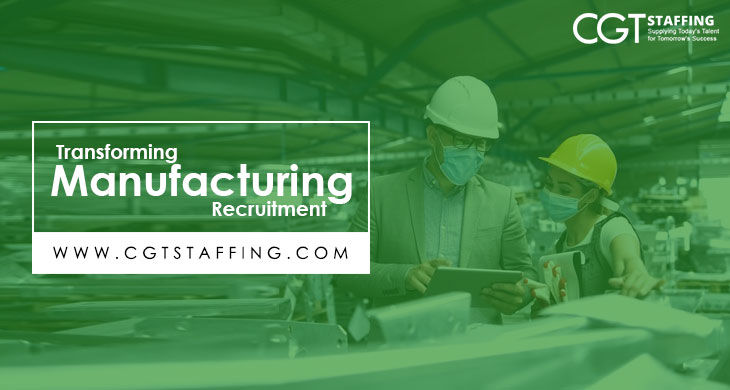The manufacturing industry has exemplified industrial progress ever since the first Industrial Revolution. Since that time, there have been three more such revolutions, involving significant advances like robots on assembly lines and computers as part of the manufacturing process. The Fourth Industrial Revolution has been ongoing for some time now, and this time the transformational element is the aggregated strength of digital technology over the past two decades.
Table of Contents
The Challenges in Modern Manufacturing Hiring
It would be helpful at this point to emphasize the difference between business change and business transformation. The former involves small or incremental changes limited to a specific department or function. A transformation, on the other hand, involves a complete overhaul of the entire business.
All business processes need to align with the transformation for it to be successful, from production operations to manufacturing staffing. This blog examines the ways a digital transformation can impact a very critical function in a manufacturing firm: the recruitment and human resource management department.
There are several challenges in digital transformations. The manufacturing industry has its own challenges, some of which are specific to the recruitment function. Whether your manufacturing business relies solely on in-house recruiters or supplements its efforts with a staffing agency, you may find many of the same challenges exist in your firm. They may be impairing the success of your overall digital transformation, not just the hiring function itself. Here are some of the more significant ones:
Leadership with Insufficient Vision
A successful business relies heavily on good leadership. The success of a business transformation depends upon the same. Without the right leadership in place, any efforts to transform recruitment functions in line with a broader transformation will be inefficient at best. However, the right leadership has a clearer vision and a better idea of bringing staffing into the 21st Century.
Using Inefficient Processes
The processes that a recruitment function uses today are far more advanced than those used for most of the last century. Most successful manufacturing concerns today have evolved with the frequent changes in technology and quality assurance standards. They have managed to source the right talent at the right time to help them navigate changing conditions.
On the other hand, the conventional methods most businesses use today are far less efficient than many modern alternatives. Making use of integrated systems that allow for applicant tracking, candidate management, talent pipeline management, and so much more, manufacturing recruiters can acquire far better talent far more efficiently than they do now.
Recruiters and Stakeholders Resisting Changes
People are resistant to change as a matter of instinct. Most people prefer to remain in the familiarity of routine and are uncomfortable with sudden changes. Recruiters are no different, even those working with third-party stakeholders like an engineering staffing agency. The resistance, however understandable, is an impairment to the success of a transformation in the recruitment function.
For a smooth digital transformation to occur, all stakeholders must be on board and on the same wavelength. There are few ways more efficient than involving everyone involved in the recruiting function and encouraging them to offer input as to what they would require from the transformation. Their experience and knowledge can prove invaluable as far the recruitment transformation is concerned.
An Incomplete Transformation
A partial transformation is generally not advisable, no matter what business function you choose. There are bound to be issues in the transition, and that is to be expected. However, with the additional challenges in integrating standalone information silos and management systems, the transformation can become quite messy.
In many ways, a partial transformation may leave a recruitment function in worse shape than it was in before the transformation. The transformation should always encompass the entire process, seeking to integrate the function into the overall business transformation as well.
No Defined Goals or Measurements
The biggest hurdle in any business shift is defining a new set of milestones and performance measurements. To achieve a successful transformation, there need to be key milestones along the way. For example, the transformation could be divided into successive segments. With each segment carrying a formal deadline, the transformation will have a solid direction to proceed in.
However, on its own, that may not prove enough. Each stage or segment will also require defined metrics that measure success. Without giving careful thought into defining these goals and metrics, there may be no accurate way to measure the success of the digital transformation in the recruitment function.
